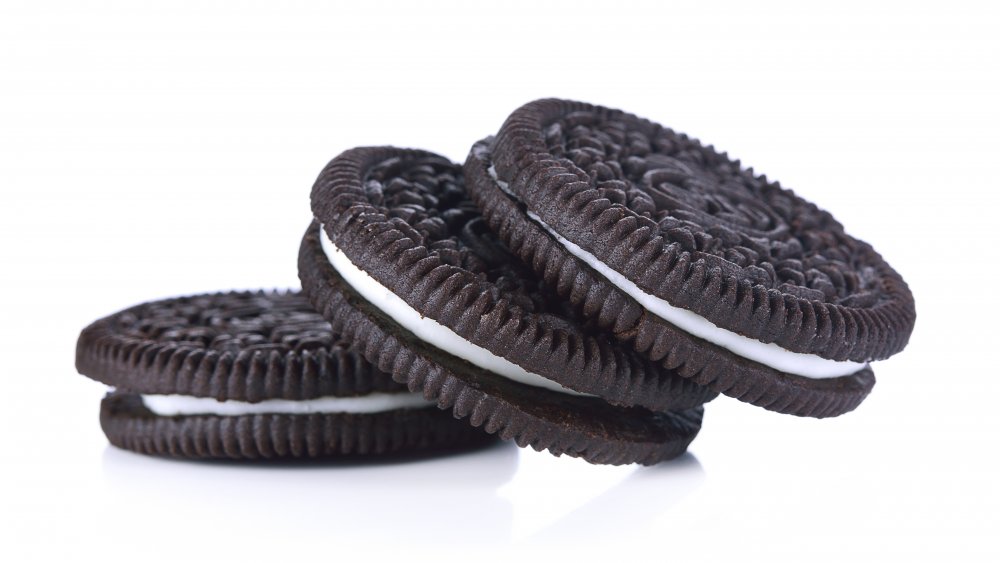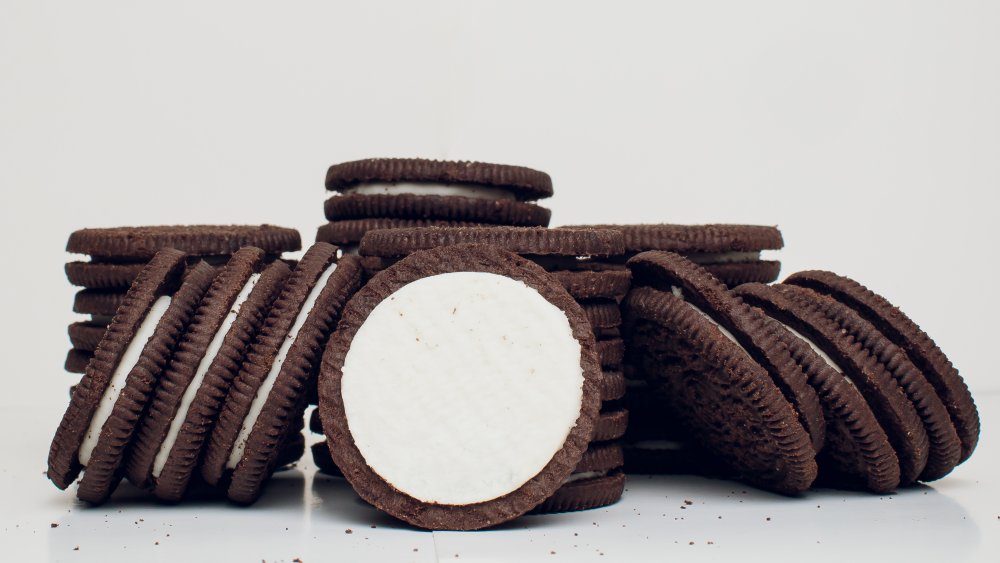The Ingredient You'd Be Surprised Is Missing From Oreo Filling
If you're a vegetarian, chances are you already know what's in (or, rather, not in) an Oreo cookie. If, on the other hand, you're not, you may be surprised to learn that your favorite chocolate and cream sandwich cookie doesn't contain any cream — or even milk for that matter. The cookies are ostensibly vegan, as it turns out (if you don't count potential cross-contamination during production, according to Oreo). So, if there's no dairy in the filling, then what is really in it, and how do they get away with calling it cream?
According to Eat This, Not That!, Oreo skirts the dairy issue by calling the cookie filling "creme" instead of cream, but these cookies weren't always vegan. Initially, the creaminess of the filling was achieved, not with cream (or vegetable oils as it is today), but with pig lard. If the revelation that these "cream" filled cookies actually contain no cream at all is difficult for you to swallow, imagine learning all of that filling is actually lard! It's no wonder the company switched over to a vegetarian and kosher recipe back in the late '90s (via Time).
The ingredients you'd be surprised are in Oreo filling
While there is still plenty we don't know about the Oreo's secret recipe, we know more than you might think. Back in 2014 two men were convicted of selling the secret to Oreo's white creamy center to competitors in China (via The Daily Meal). That secret? Titanium dioxide, which you might recognize as an ingredient in some sunscreen products. It's used in all kinds of foods, from candies to coffee creamers, to enhance their white color. While titanium dioxide is generally considered safe by the FDA, there are health concerns when consumed at large doses, so just be aware of what you're eating — and do so in moderation (via Healthline).
The other ingredients in the Oreo "creme" filling can be deduced by reading the package and making a few basic assumptions: sugar, high fructose corn syrup, soy lecithin, artificial flavor, and palm/canola oil (via Mental Floss). So, basically sugars, vegetable fats, and soy lecithin, which is an emulsifier. Soy lecithin has its own potential concerns (like the fact that it's usually extracted via harsh chemical solvents), but it is often found in chocolates, salad dressings, and other creamy food products, so it's not too surprising that it's in this velvety cookie filling (via HuffPost).

